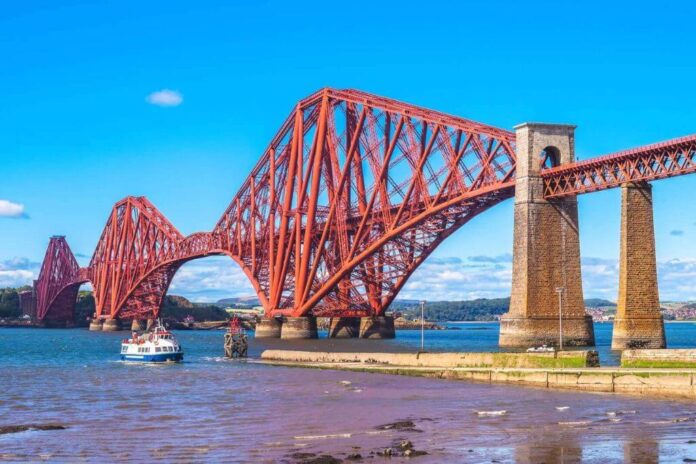The Forth Bridge, located in the east of Scotland and spanning the Firth of Forth, is located 9 miles (14 kilometers) west of the heart of Edinburgh. Here are the top ten fascinating facts about the Forth Bridge.
1. Scotland’s Forth Bridge was selected as the country’s top man-made wonder in 2016.
Fourth Bridge, which was built in 1890 and was named Scotland’s greatest man-made wonder in 2016, is viewed as a representation of Scotland.
2. It is a UNESCO World Heritage Site
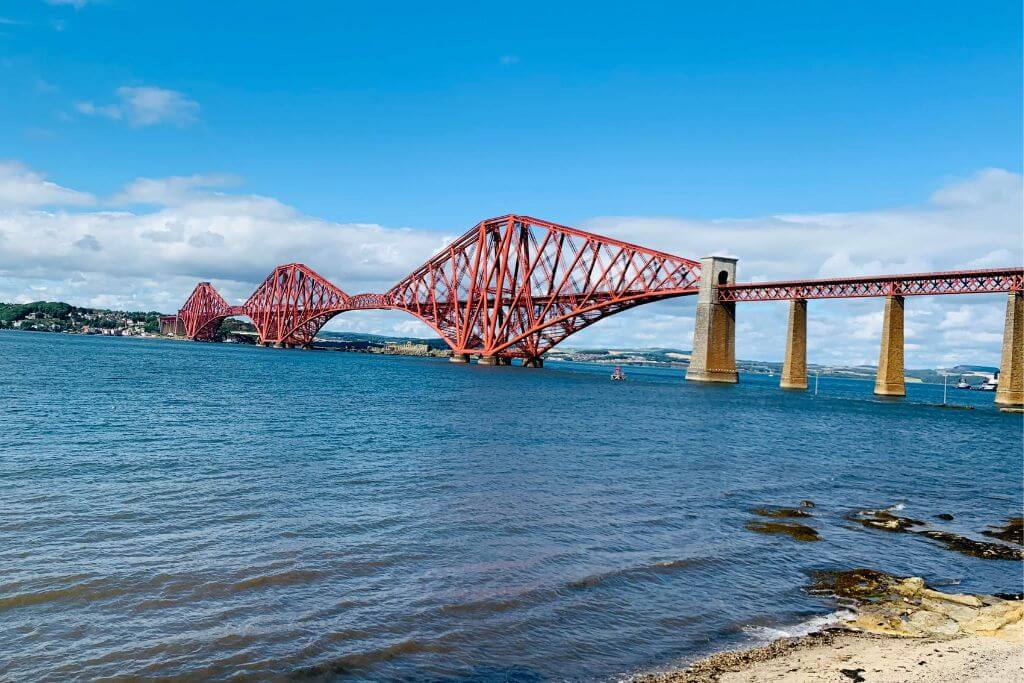
A place or monument that is legally protected by a global treaty and overseen by the United Nations Educational, Scientific, and Cultural Organization is a UNESCO World Heritage Site (UNESCO).
UNESCO often names places as world heritage sites when they are considered to be significant from a cultural, historical, scientific, or another perspective.
The locations are typically deemed to contain natural and cultural heritage that is of exceptional significance to humanity. As a result of this and what it symbolizes to Scotland as a country, Forth Bridge is regarded as a UNESCO world heritage site.
3. It is also known as Forth Rail Bridge.
The Forth Bridge, created by English engineers Sir John Fowler and Sir Benjamin Baker, is also known as the Forth Rail Bridge. This is despite the fact that this has never been its official name, in order to distinguish it from the nearby Forth Road Bridge.
4. The Duke of Rothesay opened the Forth Bridge in 1890.

The bridge’s construction started in 1882, and the Duke of Rothesay officially opened it on March 4th, 1890. The final rivet, which was gold-plated and appropriately inscribed, was driven home by him.
After an eight-day inquiry, the bill authorizing the bridge’s construction was approved on May 19, 1882, with only two competing railroad firms objecting.
Sir Thomas Tancred, Mr. T. H. Falkiner, Mr. Joseph Philips, civil engineers, and contractors, as well as Sir William Arrol & Co., were awarded the contract on December 21.
The Siemens brothers made improvements to furnace design, while the Martin brothers made improvements to the manufacturing process, which made it possible to produce high-quality steel quickly.
John Finlayson Bain, an Edinburgh silversmith, created the key for the formal opening, and it is recognized by a plaque on the bridge.
Up until 1919, when the Quebec Bridge in Canada was finished, it was the longest single cantilever bridge span in the whole world when it first opened.
5. Prior to its completion, ferries were the only means of transit across the firth.
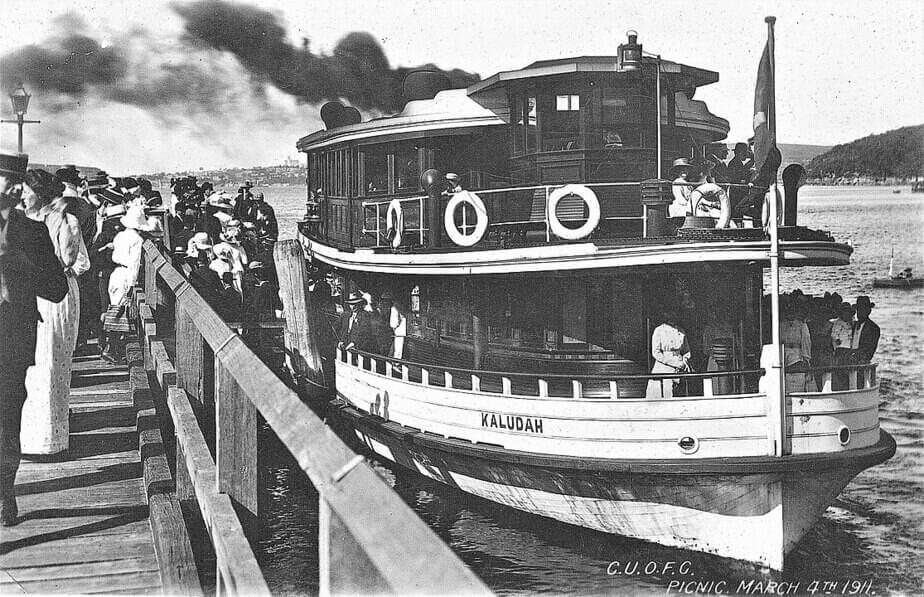
Ferries were used to traversing the Firth before the bridge was built.
A proposal for two tunnels, one in each direction, was made in 1806, and James Anderson created a design for a three-span suspension bridge nearby in 1818.
6. It measures 8,094 feet in length.
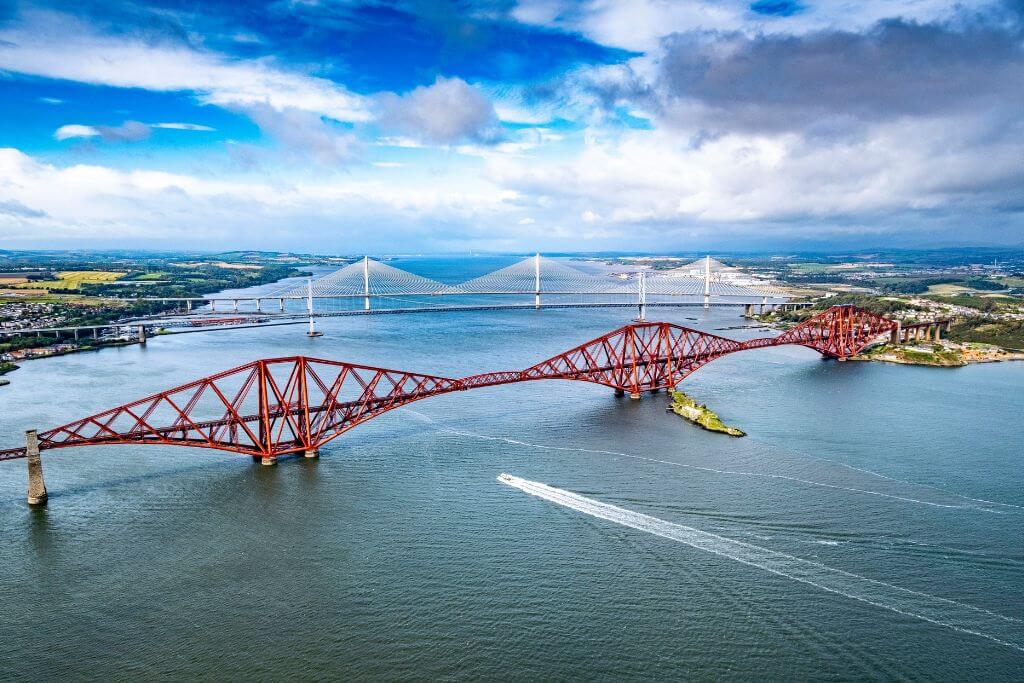
The bridge has a total length of 8,094 feet and spans the Forth between the communities of South Queensferry and North Queensferry, with the double-track elevated 150 feet above the water at high tide.
The bridge has two 1,700-foot main spans, two 680-foot side spans, and 15 168-foot approach spans. Two 680-foot cantilever arms that support a core 350-foot truss make up each major span.
With 6.5 million rivets used, the superstructure of the bridge weighed 50,513 long tons. Granite, 640,000 cubic feet, was also used in the bridge.
7. The bridge is constructed utilizing the cantilever bridge technique.
The cantilever bridge construction method was used to construct the bridge. A cantilever bridge is a bridge made of cantilevers, which are supported at only one end and extend horizontally into space.
A cantilever beam supports a light central girder at the Forth Bridge, following a principle that has been employed in bridge construction for thousands of years.
In a demonstration in 1887, the Japanese engineer Kaichi Watanabe supported Fowler and Baker while they were seated in chairs to demonstrate the utilization of tension and compression in the bridge.
With their arms in tension and their sticks in compression, Fowler and Baker represent the cantilevers, while the bricks serve as the cast-iron-weighted end piers of the cantilevers.
8. The Forth Bridge was the first significant steel-built building in Britain.
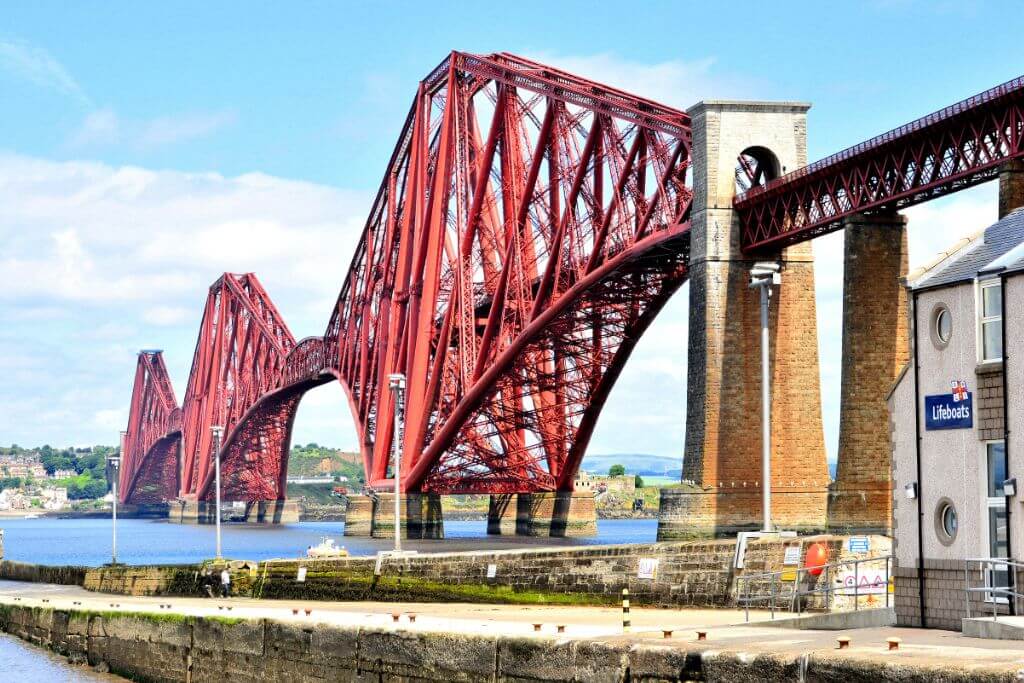
The bridge was the country’s first significant steel-built building. The Eiffel Tower, a similar structure in France, was made of wrought iron.
Following the development of the Bessemer process, which was patented in 1856, substantial amounts of steel were made available.
The Board of Commerce set a maximum design stress for railway bridges of 77.22 N/mm2 in 1859. But when technology advanced, this was altered.
Pierre and Emile Martin, headquartered in France, and Frederick and William Siemens, based in England, produced the steel.
9. It was finished in 1889.
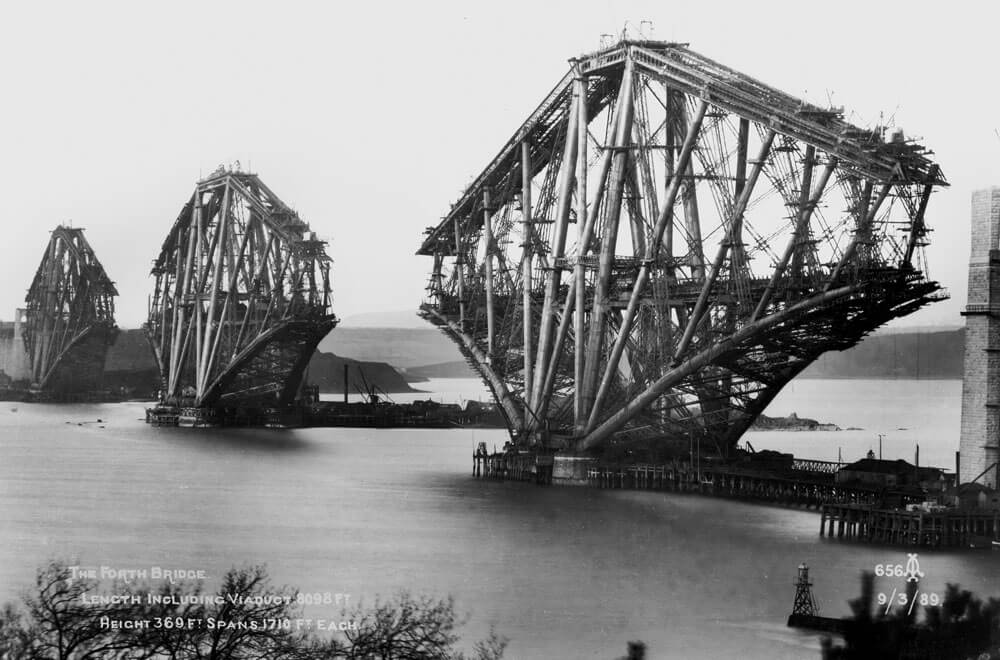
The bridge was finished in December 1889, and load testing was done on the finished bridge on January 21st, 1890.
From South Queensferry to the center of the north cantilever, two slow-moving trains carrying 50 coal-loaded wagons and three large engines each were driven, with many stops made to gauge the bridge’s deflection.
This was more than double the bridge’s intended design load, and the deflection under load was as anticipated.
The cantilevers’ deflection was less than 25 mm after a strong storm a few days before that produced the highest wind pressure ever at Inchgarvie (1 in).
On February 24, a train with two carriages carrying the heads of the involved railroad companies conducted numerous crossings, marking the first full crossing.
10. 73 fatalities have been linked to the bridge as of 2009.
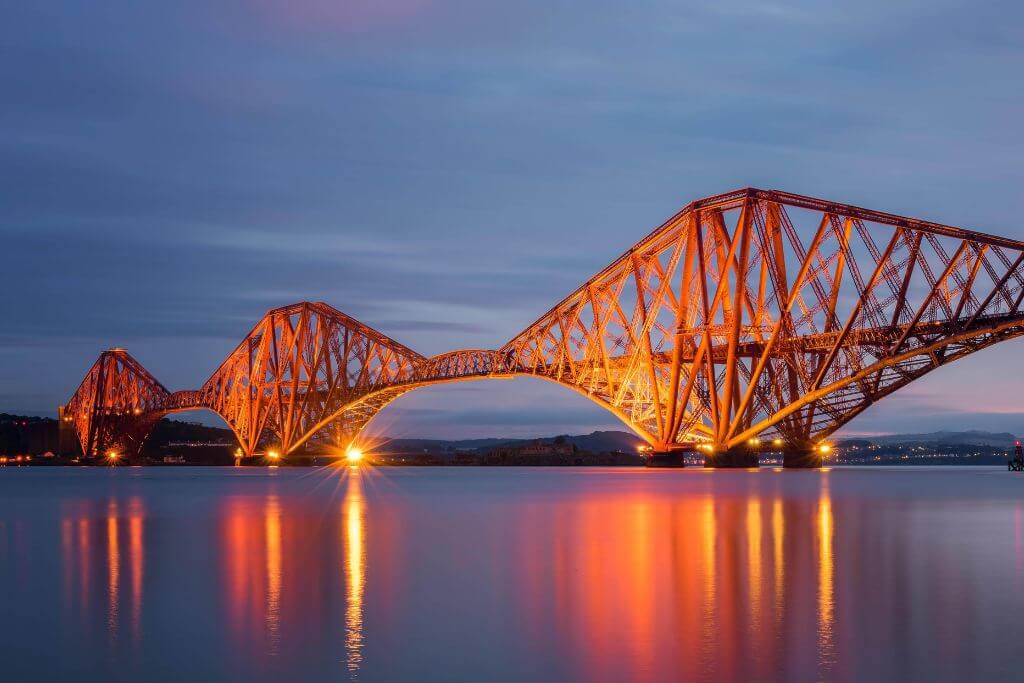
Over 4,600 people were working on building the bridge at its height of construction. 57 lives were lost, according to Wilhelm Westhofen’s 1890 report.
A group of neighborhood historians set out to identify every person who perished when the Forth Bridge Memorial Committee was established in 2005 with the goal of erecting a memorial.
As of 2009, 73 fatalities had been linked to the bridge’s construction and its immediate aftermath.
It has been reported that the 57 deaths statistic doesn’t include those who passed away while working on the bridge’s approaches because those components were finished by a subcontractor. It also doesn’t include people who passed away after the Sick and Accident Club ceased operations.
Of the 73 deaths that were reported, 38 were caused by falls, 9 by being crushed, 9 by drowning, 8 by being struck by falling objects, 3 by fires in bothies, 1 by caisson disease, and five by unexplained causes.
Also, the Sick and Accident Club was established in 1883, and all workers employed by contractors were required to join.
Men and occasionally their families would receive medical care as a result, as well as payment if they were unable to work. The club also provided awards to the widows of men murdered or the wives of those who were permanently disabled, and it paid for funerals up to a specific amount.
Rowing boats placed in the river below the working areas prevented the drowning of a total of eight workers.
